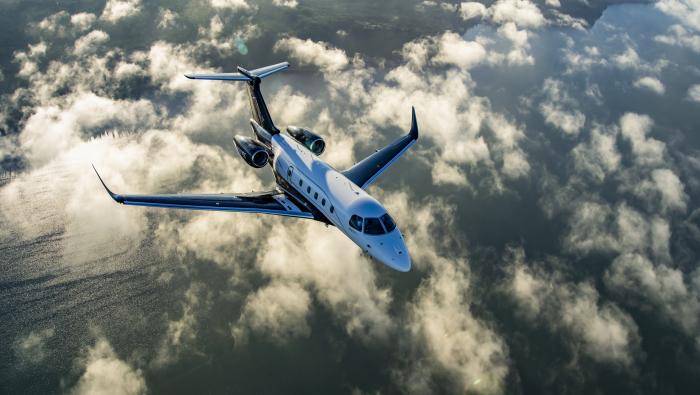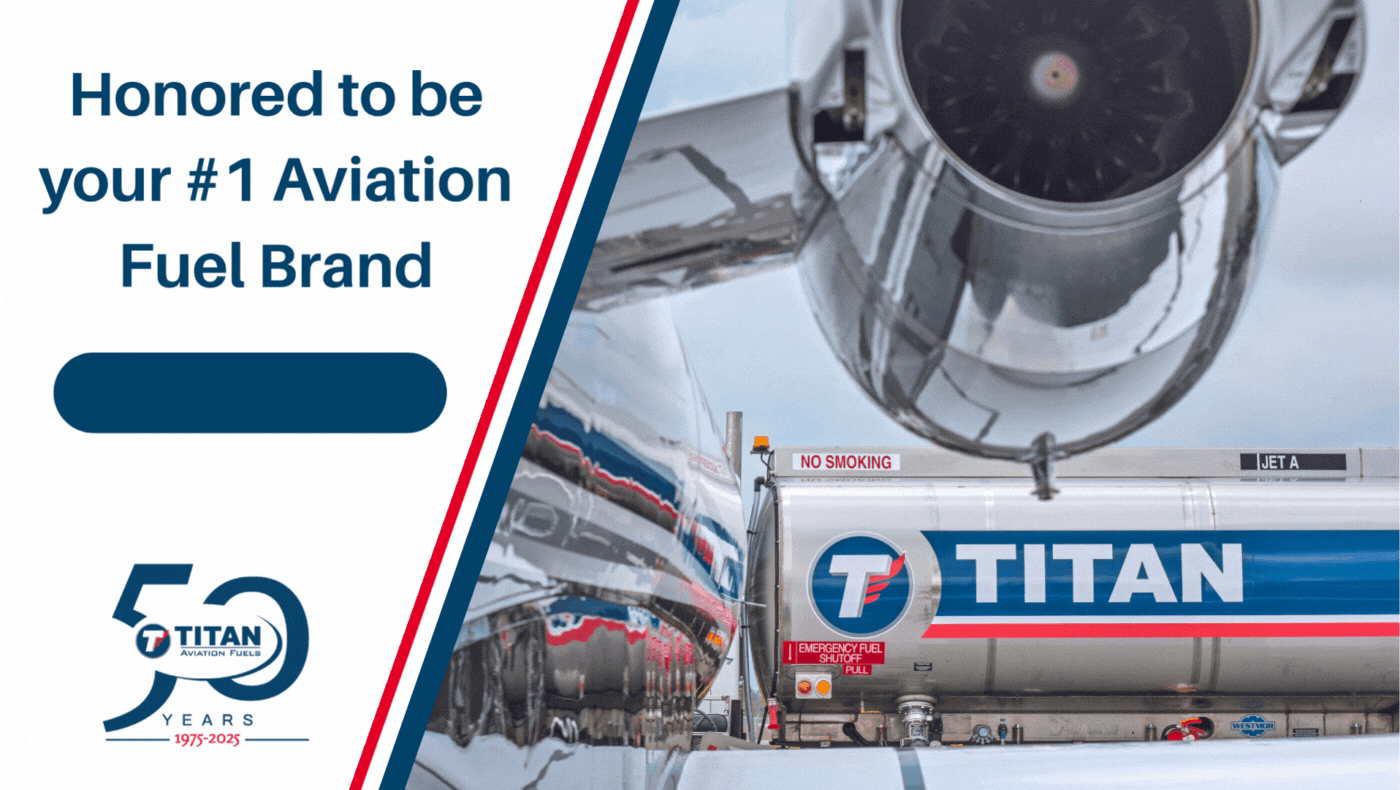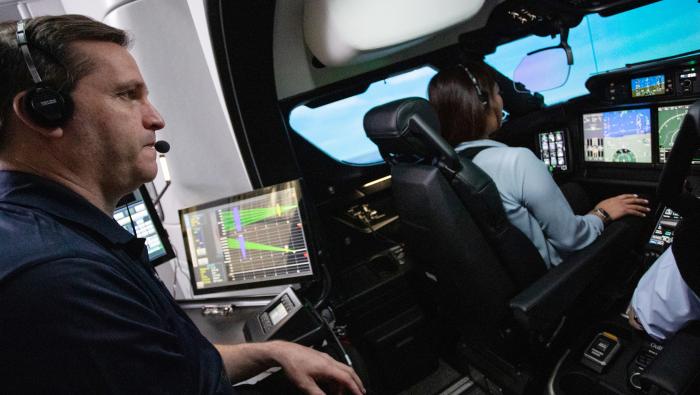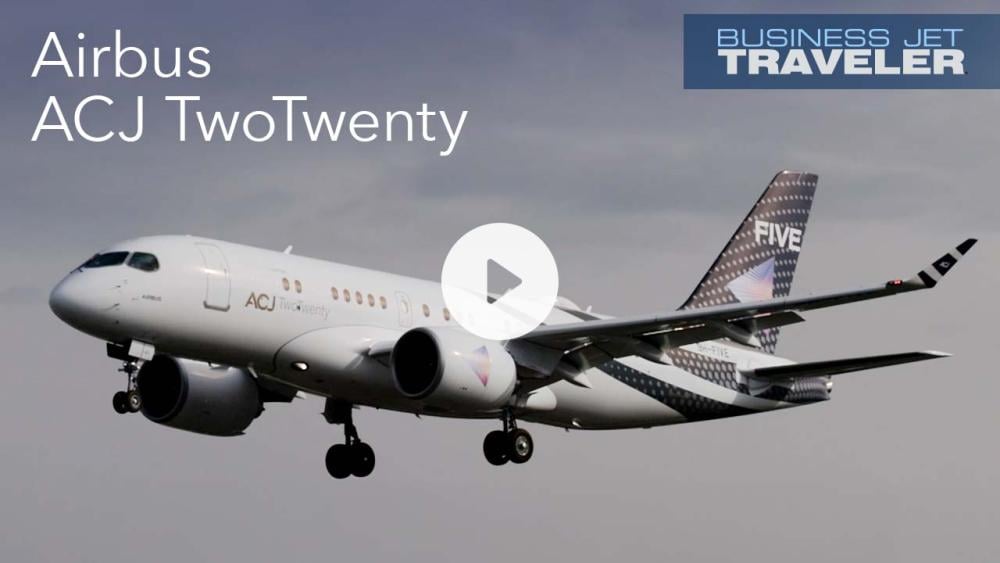
Embraer Executive Jets has reached a milestone with the delivery of its 2,000th business jet. The celebrated aircraft, a midsize Praetor 500, was handed over to an undisclosed corporate flight department from the company’s global customer center in Melbourne, Florida.
The OEM delivered its first executive jet—later branded as the large-cabin Legacy 600, a derivative of the Embraer ERJ-135 regional jet—in 2002, and then expanded its line with the addition of the upgraded Legacy 650, bizliner-class Lineage 1000, clean-sheet Phenom 100 and 300 light jets, and clean-sheet fly-by-wire Legacy 450 and 500 midsize and super-midsize jets. In 2018, it refreshed these latter offerings with the derivative Praetor 500 and 600.
Embraer's private jet division has seen a compound annual growth rate of 14% since its first delivery 23 years ago.
“Delivering our 2,000th business jet is more than just a milestone number,” said Embraer Executive Jets president and CEO Michael Amalfitano. “It is a powerful reflection of the strength of our product portfolio, our unwavering commitment to our customers, and the dedication of our employees who take pride in building every aircraft. This milestone cements Embraer’s position as a global leader in business aviation and serves as a testament to the popularity of our Praetor family of jets, especially among major corporate flight departments.”
|
The FAA has stepped up activity surrounding digital remote towers, with systems undergoing testing at the agency’s William J. Hughes Technical Center in Atlantic City. Winter Haven Regional Airport/Gilbert Field (KGIF) in Florida is working toward becoming the first in the U.S. to receive approval for an installed remote tower system.
While the timeline for approval is not certain, testing activity marks a step forward for the program that had sputtered earlier this decade after the FAA had changed certification standards for the technology. Meanwhile, remote towers have been expanding in numbers globally. Think tank Reason Foundation noted that some 30 are in operation, with nearly a dozen more in the works.
In the U.S., however, the FAA Reauthorization Act of 2024 included provisions designed to reenergize remote tower activity, including directives for the FAA to create a program for the design and operational approval of them. The FAA told AIN that several vendors have submitted proposals for remote tower systems, and the agency selected RTX-Frequentis for full system design approval evaluation and operational testing.
In Winter Haven, the Florida Department of Transportation is funding the remote tower system. To be operated from a control center at Bartow Executive Airport (KBOW), the remote tower system will use sensors and high-definition cameras to provide a view of the airspace at KGIF.
|
The Air Charter Safety Foundation’s (ACSF) Aviation Safety Action Program (ASAP) drew 1,072 reports from 292 members in the first half of the year, with altitude deviation remaining the most common type of event. As far as event categories, altitude deviation accounted for 16% of the reports, with traffic proximity representing 13%, and coordination/communication issues at 11%.
A combination of altitude, course, and speed deviations collectively comprises 25% of reports, which ACSF said underscores the continued dominance of human factor errors. Airframe issues have contributed to about 7% of reports, and engine/powerplant issues are less than 1%.
During the first six months of the year, ACSF noted a steady month-over-month decline in reporting volume, from 210 submissions in January to 146 in June. However, in tandem, the number of regulatory violations slid from six in January to none in June. In July, there was just one.
ACSF cited possible reasons for the decline, such as seasonal effects, with winter weather and holiday traffic driving higher reporting at the beginning of the year, or better regulatory compliance. But it may be as simple as employee participation having dropped.
|
A new ethanol-to-jet production pathway for sustainable aviation fuel (SAF) has been accepted into ASTM’s clearinghouse for qualification testing. Developed by Universal Fuel Technology (Unifuel), the “Flexiforming” process upgrades renewable feedstocks—including ethanol, methanol, renewable naphthas, and liquified petroleum gas—into SAF.
While SAF’s higher costs have proven to be one of the concerns regarding its wider adoption, according to Unifuel, its method uses 75% less energy and 33% less hydrogen than other processes. This results in a production cost savings of nearly 50%.
Unifuel’s clearinghouse acceptance comes after a five-month-long pilot project in which the company produced nearly 100 liters of sample SAF. These samples were tested by the Bioproducts, Sciences, and Engineering Lab at Washington State University, a specialist in SAF research.
Now, the California-based company will focus on producing larger quantities of fuel for the extensive Tier 1 and Tier 2 testing required for ASTM qualification, which could come by the end of 2026. That would render its fuel suitable for blending with conventional jet-A, and further testing would follow along a path towards confirming it as a drop-in 100% synthetic jet fuel.
“The acceptance into the D4054 Clearinghouse confirms that Flexiforming can produce high-quality synthetic aviation turbine fuel with a clear route to ASTM qualification,” said Unifuel co-founder Denis Pchelintsev.
|
Sponsor Content: FlightSafety International
In business aviation, it is essential to partner with a training provider—like FlightSafety International (FSI)—that invests in your success and supports your pilots throughout their entire career.
|
FBO group Avflight is installing Beta Technologies’ electric aircraft charging equipment at four of its airport locations in Michigan. In a joint announcement today, the companies confirmed that charging stations are already operating at Lansing (KLAN) and West Michigan/Holland (KBIV) airports, and will soon be available at Traverse City (KTVC) and Willow Run (KYIP).
This initiative is backed by $2.6 million in Michigan state funding awarded to Vermont-based electric aircraft developer Beta. State officials are eager to support the development of advanced air mobility (AAM) services at regional airports across Michigan.
The latest charging station installations triple the number of FBOs where Avflight will have electric aviation infrastructure. Avflight, an Avfuel group business, already has Beta’s equipment at Akron-Canton (KCAK) in Ohio and Columbus (KUBS) in Mississippi.
According to Beta, its equipment uses the Combined Charging System standard. This means it can be used to charge all types of electric aircraft, and also electric ground vehicles. In late July, Beta flew its Alia electric aircraft at Lansing Airport to demonstrate its capabilities.
“Michigan has a long track record of innovation when it comes to transportation, and this is another example,” said Nate Ward, Beta’s lead for charging network development. “The installation of these four chargers, and the state’s support to do so, represents a meaningful step towards advancing AAM, and delivering benefits to Michigan’s communities and economy.”
|
Aircraft completion specialist VIP Completions has delivered a fully refurbished Gulfstream G550 featuring custom interior and exterior modifications completed in just eight weeks. The accelerated project marked the first collaboration between the U.S. aircraft completions shop and Ukrainian architecture firm Yodezeen.
The refurbishment was done for a first-time aircraft owner whose acquisition was facilitated by VIP Completions sister company SmartJets. The project covered interior design modifications across multiple cabin zones, including a forward cabin configured with four club seats and two forward-facing positions, a mid-cabin conference area accommodating four passengers, and an aft cabin featuring dual two-seat divans. Custom design elements featured dynamic fiber optic accent lighting integrated into the headliner to create starlight patterns, carbon fiber accents throughout the cabin, and aft bulkhead paneling constructed from eucalyptus wood.
Material selections emphasized premium finishes with custom-designed seating and dado panels upholstered in Garrett leather, Tapis Ultraleather applications on upper cabin surfaces, and Loro Piana cashmere covering the stateroom divans. VIP Completions is based in Fort Lauderdale, Florida.
Exterior modifications featured a two-tone angular paint scheme utilizing platinum pearl and cumulus gray pearl finishes. This work was conducted by Duncan Aviation.
Arthur Sharf, co-founder and lead architect at Yodezeen, noted the project’s emphasis on precision and contemporary minimalist design principles in creating what he characterized as “a beautiful, tranquil living space” rather than conventional aircraft interior styling.
|
Vancouver, British Columbia-based online charter broker Airble recently signed up its 60th operator and has developed a widget that its industry partners can use as an embeddable website booking tool. Through the app, Airble customers can access the marketplace to compare and book charter flights, empty legs, air tours, and travel packages.
Founder Saeed Golzar launched Airble in 2022 in collaboration with Canadian partners to bring more transparency to the booking process, the company said, and by June 2023 had expanded beyond the Canadian borders with its first U.S. operator, NeaJets. In recent months, Airble has expanded more globally with the onboarding of Greek air operator Bellavia and the first Asian operator, Medevac. U.S.-based Maverick Helicopters became Airble’s 60th collaboration partner.
“At every step, we’ve listened to our operator partners,” Golzar said. “They not only embraced the B2C platform, but wanted the technology behind it to offer better customer service on their own websites. That’s how the idea for our website widget was born.”
The widget enables participating operators to integrate Airble’s booking engine into their own websites, extending the reach of the marketplace.
|
SUSTAINABILITY QUESTION OF THE WEEK
What are the primary challenges facing the development of charging infrastructure for electric aircraft?
- A. Access to sufficient electrical power.
- B. A standardized, efficient charging interface.
- C. Decarbonized electricity generation.
- D. Answers A and B are both correct.
- E. Answers B and C are both correct.
The National Association of State Aviation Officials (NASAO) has released the first set of topic papers from its advanced air mobility (AAM) multistate collaborative project. Outlined in the papers, which are hosted on the collaborative project’s website, is how 36 states across the U.S. can support the integration of AAM into the National Airspace System through infrastructure planning, policy alignment, and coordination with the FAA.
Formed in 2023 with an initial summit near Washington Dulles International Airport, the Advanced Air Mobility Multistate Collaborative (AAMMC) group grew from a handful of participants into a nationally recognized forum. “A small gathering of eight to 10 states in that initial summit has evolved and strengthened,” said Virginia Department of Aviation director Greg Campbell, “representing 36 states participating in the AAMMC, which is now nationally recognized for its constructive collaboration.”
Board chair Martin Blake described the joint approach as an indication of NASAO’s unique role, saying the group’s ability to channel ideas from across more than 36 states and industry partners “slices a huge challenge into manageable tasks with the states working together in partnership with [the] FAA and each other.” Participation is open to all state aviation agencies, with private sector stakeholders able to contribute expertise.
|
We Go Inside the ACJ TwoTwenty
The Airbus ACJ TwoTwenty carries up to 19 passengers in a VIP cabin with six zones. It operates from 5,000-foot runways and flies nonstop routes like L.A. to London.
|
AIN’s Corporate Aviation Leadership Summit (CALS) Mx, set for November 3 and 4 in Scottsdale, Arizona, will address pressing maintenance-focused topics, strategies, and solutions in business aviation. The summit is attendee-centric, serving as an educational and professional networking opportunity that connects directors of maintenance and corporate aviation leaders with peers, industry experts, and solution providers in a relaxed environment. The event is limited to 50 attendees, so we encourage you to apply ASAP to attend this all-expenses-paid event as our guests.
|
UPCOMING EVENTS
- AIRPORT EXPERIENCE SUMMIT 2025
- GUANGZHOU, CHINA
-
 September 8 - 11, 2025 September 8 - 11, 2025
- JETNET IQ SUMMIT
- WASHINGTON, D.C.
-
 September 9 - 10, 2025 September 9 - 10, 2025
- GLOBAL AEROSPACE SUMMIT
- WASHINGTON, D.C.
-
 September 9 - 11, 2025 September 9 - 11, 2025
- CORPORATE AVIATION LEADERSHIP SUMMIT EUROPE
- BASEL, SWITZERLAND
-
 September 15 - 17, 2025 September 15 - 17, 2025
- NATIONAL AVIATION HALL OF FAME ENSHRINEMENT 2025
- WICHITA, KANSAS
-
 September 19, 2025 September 19, 2025
- MONACO YACHT SHOW
- MONACO
-
 September 24 - 27, 2025 September 24 - 27, 2025
- NORTH AMERICAN SAF CONFERENCE & EXPO
- MINNEAPOLIS, MINNESOTA
-
 September 24 - 25, 2025 September 24 - 25, 2025
- RACCA ANNUAL CONFERENCE
- SCOTTSDALE, ARIZONA
-
 September 30 - October 2, 2025 September 30 - October 2, 2025
|
 |
|
|
AINalerts News Tips/Feedback:
News tips may be sent anonymously, but feedback must
include name and contact info (we will withhold name on request). We reserve the
right to edit correspondence for length, clarity, and grammar. Send feedback or
news tips to AINalerts editor Chad Trautvetter.
|
AINalerts is a publication of AIN Media Group, 214 Franklin Avenue, Midland Park, New Jersey. Copyright 2025. All rights reserved.
Reproduction in whole or in part without permission is strictly prohibited.
|
|

















